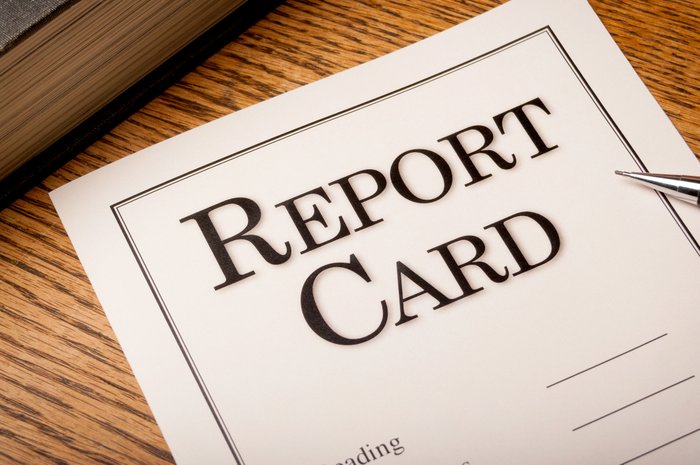Shared solar programs or community solar programs continue to grow in popularity as a compelling model to increase access to clean, renewable energy and provide more options for consumers. Seeking to help new states learn from existing programs, the Interstate Renewable Energy Council (IREC) released its 2019 National Shared Renewables Scorecard — a reference tool for regulators, policymakers, developers and advocates seeking to better understand how programs stack up, relative to best practices and each other. You can check out the results at the bottom of this post.
The 2019 Scorecard assesses 20 programs in 17 states, and features grades for three newly launched programs in Illinois, New Jersey and Oregon. Three other states not graded on the 2019 Scorecard – California, Connecticut and Maine – have programs still under development and/or awaiting approval.
Although more programs are in place in more states than ever before, the shared renewables market is not yet meeting its full potential. Community solar still represents less than two percent of all operating solar nationwide.
“For states working to achieve ambitious 100% clean energy goals, community solar programs are an important tool that can help ensure clean energy benefits are available to consumers, regardless of income, housing or neighborhood,” says IREC President/CEO Larry Sherwood.
Market development is often impacted by other forces outside of the legislation and rules, such as local permitting and/or land use challenges, the availability of other financial incentives, or other unanticipated issues that arise during implementation. The Scorecard assesses only the rules adopted by a state regulatory commission, and does not reflect these other market forces.
Developers, state officials, utilities, regulators and customers are all still learning how to optimize the shared renewables model to support robust project development, ensure benefits to participants and all ratepayers, and support access to all customers, regardless of a customer’s income or where they live.
“As more states analyze program performance over time, adjustments to all existing programs may be warranted to ensure meaningful, fair and equitable market development,” says IREC’s Baldwin.
How the scorecard works
The Scorecard evaluates only active shared renewables programs – enabled through either legislation or regulatory orders. It does not score voluntary utility-led programs or state programs that are still under development.
States’ Scorecard grades are determined by specific criteria that reflect how shared renewable energy programs are performing – not just in terms of what policies and rules are in place, but also whether the programs are resulting in projects getting built and customers participating.
Compared to 2018, most states have similar grades for 2019, and still only two state programs, Minnesota and New York, get A’s. The most notable change to the 2019 criteria is the addition of a bonus for programs that have at least 100 megawatts (MW) of installed capacity. This increase from last year’s 10 MW threshold reflects the critical importance of programs being able to scale and spur the development of more meaningful volumes of new renewable energy to serve more customers.
The programs ranked the highest are designed to benefit consumers and expand access to renewable energy through the detailed scoring categories and criteria. These include:
General Program Details – including program timeframe, aggregate capacity limit, tracking and reporting requirements, and whether and how the program addresses low- to moderate-income (LMI) consumer participation.
Consumers and Subscriptions- including customer eligibility, subscription sizes and terms, and portability and transferability.
Generation Systems– including eligible technologies, ownership and management requirements, system capacity limits, minimum and maximum numbers of subscribers per system, and system siting requirements.
Bill Credit and Renewable Energy Credits (RECs)- including how the rate is valued, the treatment of unsubscribed energy, and treatment of RECs.
Strong Interconnection Procedures – Though interconnection standards are not a part of shared renewable energy program rules, the Scorecard ranks states based on the efficiency, ease and affordability of the interconnection process, which ensures projects are not subject to unnecessary costs and delays.
2019 Grades
A grades
- Minnesota
- New York
These states have incorporated the majority of identified shared renewables best practices.
B grades
- Colorado,
- Illinois,
- Massachusetts (Virtual Net Metering),
- Maryland,
- Maine (Net Energy Billing),
- New Hampshire,
- New Jersey,
- Oregon and
- Washington, D.C.
Although these states have some room for improvement, their programs reflect many best practices and offer solid foundations for shared renewable energy development.
C grades
- California (Virtual Net Metering),
- Delaware,
- Hawaii,
- Massachusetts (Neighborhood Net Metering),
- Rhode Island and
- Vermont.
These programs lack the key program components necessary for successful market development.
D grades
- California (Enhanced Community Renewables component of Green Tariff Shared Renewables)
- Connecticut (both programs – Virtual Net Metering and Shared Clean Energy Facility Pilot Program).
These programs do not comport with many of the identified best practices, which could impede program effectiveness and market development.
— Solar Builder magazine



Leave a Reply
You must be logged in to post a comment.